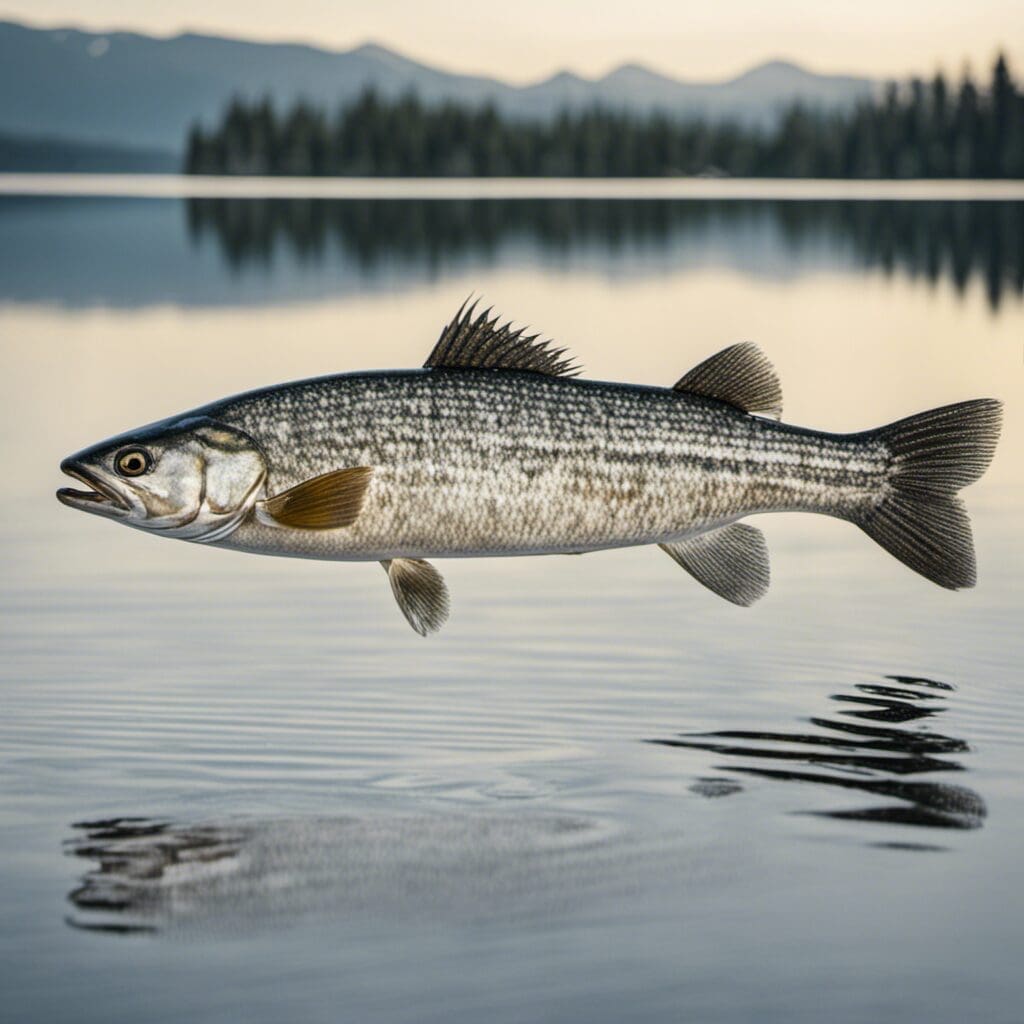Species Name: Lake Whitefish (Coregonus clupeaformis)
Family Name: Salmonidae
Conservation Status
Current status: Not Endangered
Conservation efforts: Regular population monitoring and habitat conservation
Statistics
| Statistical Measurement | Average | Range |
|---|---|---|
| Length | 40-50 cm | 20-70 cm |
| Weight | 1-2 kg | 0.5-4 kg |
| Average Lifespan | 10-15 years | N/A |
Distribution
Regions/Countries
Lake whitefish are native to northern parts of North America, especially in Canada and the northern United States.
Migration patterns
Whitefish exhibit a unique migration pattern spawning in shallow water in late fall and winter and feeding in deeper water during the summer.
Habitats
Water type: Freshwater
Depth range: 25-100 meters
Temperature range: 1-16°C
When and Where to See
Seasonal patterns
Lake whitefish can be seen year-round but are most active during the summer.
Time of day
Most likely to be spotted during the early morning and late evening.
Best Fishing Locations
Top 10 Places:
- Lake Superior, US/Canada Border
- Lake Michigan, US
- Lake Huron, US/Canada Border
- Lake Erie, US/Canada Border
- Lake Ontario, US/Canada Border
- Green Bay, US
- St. Marys River, US/Canada Border
- Maumee River, US
- Grand River, Canada
- Manistique Lake, US
How to Catch
Bait or lures
Lake whitefish are commonly caught with worms, minnows or synthetic baits.
Fishing techniques
Ice fishing, fly fishing, and bottom fishing are the most effective techniques.
Identification Guide
Physical characteristics
Lake whitefish are silver-grey with a small head and mouth, deep body and distinctly forked tail.
Culinary
How to Cook
Lake whitefish can be baked, grilled, smoked, or steamed. It should be cooked until the flesh is opaque and flakes easily.
Taste Profile
Lake whitefish has a sweet, delicate flavor with a flaky texture.
Nutritional Information
Nutritional facts per 100g:
- Energy: 112 kcal
- Protein: 20 g
– Fat: 3 g
– Cholesterol: 58 mg
– Sodium: 59 mg
Additional Information
Behavior
Lake whitefish primarily feed on benthic organisms like other small fish, larvae and zooplankton.
Predators and threats
Their primary natural predators are larger fish, while overfishing and habitat destruction caused by human activities also pose threats.

